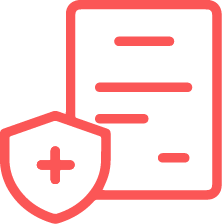A Laboratory Information Management System (LIMS) is more than just software; it’s the operational backbone of today’s laboratories. From tracking samples and managing workflows to archiving results and ensuring compliance, a LIMS drives efficiency and consistency across the lab.
But here’s the catch: a LIMS is only as reliable as the strength of its validation. Without structured, documented validation, you can’t prove the trustworthiness of its outputs—something regulators expect under FDA 21 CFR Part 11, EU GMP Annex 11, and ISO/IEC 17025. Guidance from GAMP 5 and ISPE further defines best practices.
This blog offers a step-by-step guide to LIMS validation, the challenges you may face, and how to turn validation into a strategic advantage rather than a compliance burden.
Understanding LIMS Validation
LIMS validation is a structured process that ensures the system works reliably in your specific laboratory environment while meeting both business needs and regulatory expectations.
Its objectives include:
- Verifying system functions against user requirements
- Ensuring reliable data handling and sample traceability
- Confirming the accuracy of calculations and reports
- Maintaining documented control to support audits and inspections
Successful validation is a team effort, involving IT, QA, system vendors, and end users. Together, they collaborate to define requirements, execute tests, and maintain a validated state.
Step-by-Step Guide to LIMS Validation
Validating a Laboratory Information Management System (LIMS) is a structured, methodical process that aligns technology with laboratory requirements, regulatory expectations, and quality assurance.
Each step builds upon the previous, culminating in a system that’s not only operational but trustworthy and audit-ready.
1. Develop a Validation Plan
Validation starts with a plan: a structured document that defines the scope, objectives, methods, and deliverables of the validation process.
Key components include:
- Objectives: What the validation is intended to demonstrate
- Scope: Modules, integrations, and processes included
- Testing Strategy: risk-based approach covering unit, integration, functional, and user acceptance testing (UAT)
- Roles and Responsibilities: QA, IT, end users, vendors
- Documentation Deliverables: URS, test plans, protocols, reports
A well-constructed validation plan aligns stakeholders and forms the foundation for all subsequent activities, mitigates confusion, maintains traceability, and supports audit-readiness.
2. Define Purpose and Scope
Clarity is critical before testing begins. Define what the LIMS is expected to accomplish and which processes or interfaces it will manage.
A well-defined scope should include:
- Laboratory Workflows (sample reception, testing, release)
- System Modules (calculations, reporting, instrument integration)
- Connected Systems such as Enterprise Resource Planning (ERP) systems, Chromatography Data Systems (CDS), and Electronic Laboratory Notebooks (ELN)
- Security and Performance criteria
Defining the scope early reduces ambiguity and prevents validation efforts from drifting or becoming unnecessarily complex over time, leading to extended timelines and unexpected costs.
3. Conduct a Risk Assessment
Use a risk-based approach to focus validation efforts where they matter most, such as sample calculations, audit trail controls, and system interfaces.
This phase involves the following key steps:
- Identifying Risks: What could fail? Think about data loss, calculation errors, access issues.
- Analyzing Impact: What would the consequence be – non-compliance, product failure, audit observations?
- Evaluating Likelihood: How probable is each risk, given historical data and system complexity?
- Assessing Detectability: Can failure be detected through routine or built-in controls, or would it go unnoticed?
- Prioritizing Mitigation: Allocate the most testing to high-risk areas; low-risk items may require only basic verification.
Risk-Based Validation Approach by System Component
|
Risk Level |
Example Component |
Validation Approach |
|
High |
Sample result calculation |
Unit testing + Integration testing + Functional testing + User Acceptance Testing |
|
Medium |
Audit trail access control |
Functional testing (including Security testing) + User Acceptance Testing |
|
Low |
Print layout configuration |
Vendor testing review + Basic Functional Testing (Configuration verification) |
Best Practice: Use structured risk matrices or FMEA to justify your test coverage decisions. This justifies your validation approach to auditors and management alike.
4. Test Execution
Now you move from planning to execution: demonstrating that the system performs as expected in a controlled, traceable way. The validation typically follows the V-model and GAMP 5 risk-based testing categories:
- Unit Testing: Verifying that individual components or configurations work correctly in isolation.
- Integration Testing: Ensuring that modules, interfaces, and external systems exchange data reliably and securely.
- Functional Testing: Confirming that the system’s features meet the documented user and functional requirements (e.g., sample login, user authentication, data import/export).
- User Acceptance Testing: Verifying that the system supports real-world laboratory processes and user workflows as intended.
In addition, be sure to test the following areas to support compliance:
- Security: Validating user roles, access permissions, and audit trails.
- Data Integrity: Ensuring ALCOA+ principles (Attributable, Legible, Contemporaneous, Original, Accurate) are preserved.
- Interfaces: Verifying data transfers between systems (e.g., LIMS ↔ CDS).
All test results must be meticulously documented. Deviations should trigger investigation, root cause analysis, corrective actions, and retesting if necessary.
Ensure test protocols and reports maintain traceability to the original requirements. Use traceability matrices to show the linkage between URS, test cases, results, and final conclusions.
5. Manage Changes Effectively
A validated system is not static. Patches, enhancements, or business-driven configuration changes can all impact validation status. Unmanaged, they pose compliance risks.
An effective change control process should include:
- Impact Assessment: Ensure whether the change affects a validated function or data flow.
- Documentation Updates: Verify all documentation affected by the change (SOPs, Risk Assessments, Traceability Matrixes) is successfully updated.
- Revalidation Strategy: Ensure all validation activities planned (from regression testing to partial validation) are successfully performed.
Uncontrolled changes are a common root cause of audit observations – implement structured change management to stay compliant.
6. Training and Role Clarity
Validation is a team effort. Everyone involved must understand their responsibilities and follow consistent practices.
A robust training program should address the following elements:
- Training Users on the validated functionalities, emphasizing how to operate the system within controlled parameters.
- Training Testers and QA Staff on validation protocols, documentation standards, and deviation handling.
- Defining Roles and Responsibilities throughout the validation lifecycle using a RACI matrix.
Role-specific training programs must be updated with every major system change or process update. Moreover, keeping a training matrix up to date supports both compliance and operational continuity.
7. Utilize Supporting Tools
Digital tools can streamline validation from start to finish. Key areas where technology can improve efficiency include:
- Validation Lifecycle Management Systems: Centralizing protocols, test evidence, and approvals, maintaining traceable audit trails throughout the project.
- Risk Assessment Utilities: Structuring and linking risk rationales to test cases, supporting clear prioritization for testing and mitigation.
- Change Control Systems: Documenting configuration updates and associated revalidation ensuring that modifications are documented, assessed for impact, and followed by appropriate revalidation activities.
Look for features like version control, electronic signatures, audit logs, and system integration. These not only improve execution and reduce manual effort but also demonstrate maturity and compliance to regulators.

Common Challenges in LIMS Validation
Validation, especially for LIMS projects, is rarely linear. Below are some of the most frequent pitfalls – and strategies to mitigate them.
Challenge: Undefined Requirements and Scope Creep
- Problem: Vague requirements lead to expanded scope, delays, and incomplete testing.
- Fix: Freeze scope early, conduct stakeholder reviews, and maintain a signed-off URS.
Challenge: Uncontrolled Changes
- Problem: Changes introduced post-validation aren’t documented or revalidated, leading to complex revalidations and compliance and audit risks.
- Fix: Enforce formal change control processes and link updates to risk reassessment.
Challenge: Overlooking the Validation of System Interfaces
- Problem: Integrations (e.g., with CDS, ELN or QMS) are excluded from validation, potentially causing data transmission issues or a traceability loss.
- Fix: Treat each interface as a critical element; validate data exchange and error handling.
Challenge: Documentation Overload
- Problem: Excessive or unstructured documentation – such as missing approvals or fragmented test records – can result in information loss and increased audit risk.
- Fix: Use templates, digital repositories, and assign document control responsibilities.
Challenge: Knowledge Gaps
- Problem: Undertrained users can misunderstand validation goals, execute tests incorrectly or misinterpret results, compromising the integrity of the validation process and increasing the number of corrective actions.
- Fix: Provide role-specific training and SOPs; build a shared knowledge base.
Challenge: Audit Unpreparedness
- Problem: Teams can’t demonstrate traceability or rationale during audits.
- Fix: Maintain traceability matrices, justification logs, and conduct mock inspections.
With these challenges in mind, the following best practices can help reinforce validation quality and sustainability.
Best Practices for Sustainable Validation
Consider these core best practices to reinforce quality and reduce recurring issues:
- Begin with clear, testable requirements.
- Align validation depth with risk level.
- Use a separate test environment that mirrors production.
- Maintain thorough and structured documentation.
- Automate test execution and tracking where possible.
- Establish a culture of change control and continuous improvement.
- Train cross-functional teams and conduct regular refreshers.
These habits lead to leaner validation cycles, lower rework rates, and stronger audit outcomes.
Conclusion: Validation as a Strategic Advantage
LIMS validation is more than a compliance requirement; it’s a strategic investment. A validated system reduces risks, improves efficiency, and strengthens confidence in your lab’s data.
At QbD Group, we help life sciences organizations implement risk-based, efficient, and audit-ready validation frameworks. From scoping and testing to audit preparation and change management, our experts ensure your LIMS validation supports both compliance and business goals.
Ready to validate with confidence?
Partner with QbD Group and gain a trusted ally in the complex world of regulated lab systems.
Let’s talk about how we can help.






















.jpg)







